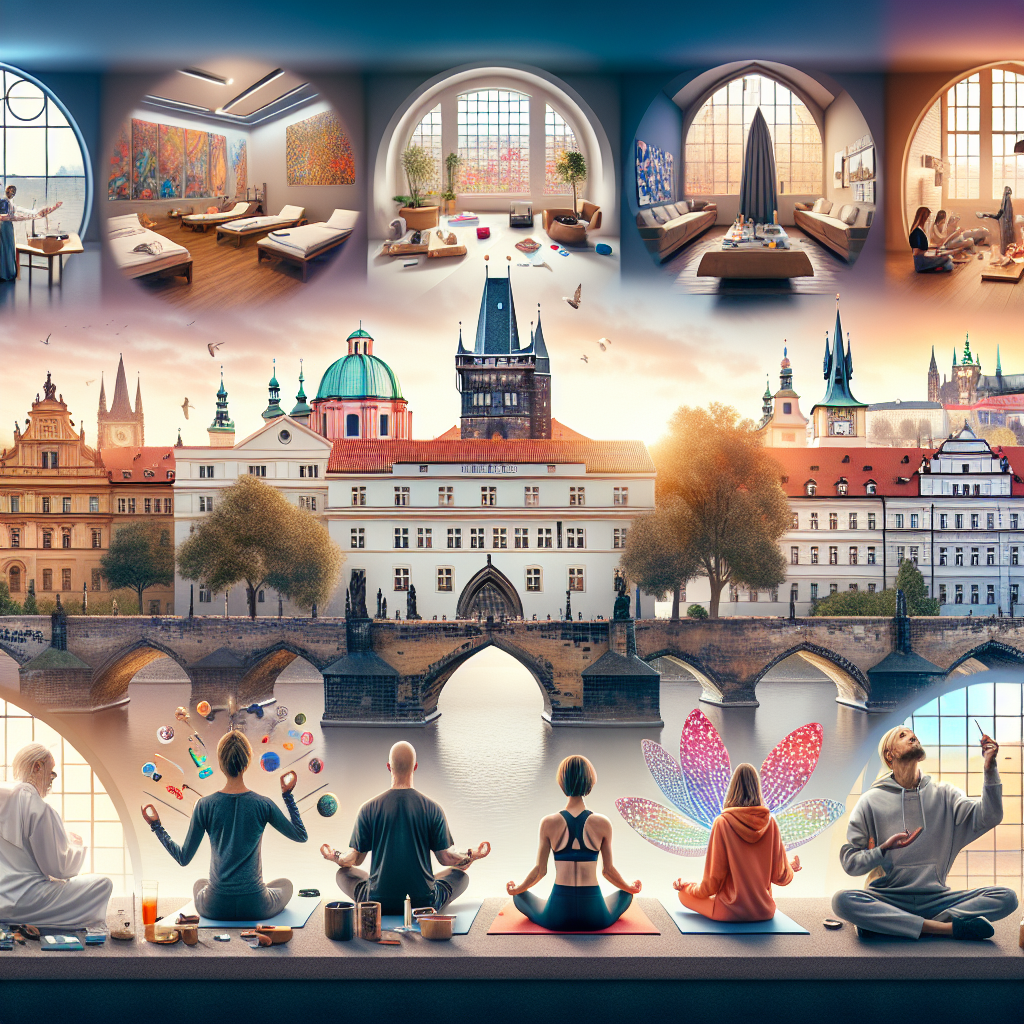-
Table of Contents
“Breaking the Cycle: Strategies to Understand and Prevent Fentanyl Relapse”
Introduction

Understanding relapse in fentanyl addiction is crucial for developing effective prevention strategies and supporting long-term recovery. Fentanyl, a potent synthetic opioid, poses significant challenges due to its high potential for addiction and overdose. Relapse, a common occurrence in addiction recovery, can be triggered by various factors including stress, environmental cues, and underlying mental health issues. Preventing relapse involves a comprehensive approach that includes medical treatment, behavioral therapy, support systems, and lifestyle changes. By addressing the root causes of addiction and providing continuous support, individuals can improve their chances of maintaining sobriety and achieving lasting recovery.
Recognizing Early Warning Signs of Fentanyl Relapse
Recognizing early warning signs of fentanyl relapse is crucial in the journey toward recovery. Understanding these signs can empower individuals and their support networks to take proactive steps, potentially preventing a full-blown relapse. Fentanyl, a potent synthetic opioid, poses significant challenges due to its high addiction potential and severe withdrawal symptoms. However, with vigilance and the right strategies, it is possible to navigate these challenges successfully.
One of the first indicators of a potential relapse is a change in behavior or mood. Individuals may begin to isolate themselves, avoiding social interactions and activities they once enjoyed. This withdrawal can be a coping mechanism for dealing with stress or emotional pain, but it often signals deeper issues. Additionally, mood swings, irritability, and increased anxiety can be red flags. These emotional shifts may stem from unresolved psychological issues or the stress of maintaining sobriety.
Another critical warning sign is the resurgence of cravings. Cravings can be triggered by various factors, including exposure to environments or people associated with past drug use. It’s essential to recognize that cravings are a normal part of recovery and do not signify failure. However, when cravings become intense and frequent, they can lead to dangerous situations if not addressed promptly. Developing coping strategies, such as mindfulness techniques or engaging in physical activities, can help manage these urges.
Changes in daily routines and habits can also indicate a potential relapse. For instance, neglecting responsibilities, such as work or school, or a decline in personal hygiene can be concerning. These changes often reflect a loss of motivation and a shift in priorities, where the individual may start to prioritize drug use over other aspects of life. Establishing a structured daily routine and setting achievable goals can provide a sense of purpose and direction, reducing the risk of relapse.
Moreover, physical symptoms should not be overlooked. Insomnia, fatigue, and changes in appetite can all be signs that an individual is struggling. These symptoms may result from the body’s adjustment to life without fentanyl or from the stress and anxiety of recovery. Seeking medical advice and maintaining a healthy lifestyle, including proper nutrition and regular exercise, can alleviate some of these physical challenges.
It’s also important to pay attention to the individual’s social circle. Associating with people who use drugs or frequenting places where drug use is prevalent can increase the risk of relapse. Building a supportive network of friends, family, and peers who encourage sobriety is vital. Support groups and therapy can provide a safe space to share experiences and gain insights from others who have faced similar challenges.
Communication plays a pivotal role in recognizing and addressing early warning signs. Open and honest conversations with loved ones can help identify issues before they escalate. Encouraging the individual to express their feelings and concerns can foster a supportive environment where they feel understood and valued.
In conclusion, recognizing early warning signs of fentanyl relapse involves a combination of behavioral, emotional, physical, and social indicators. By staying vigilant and proactive, individuals and their support networks can intervene early, providing the necessary support and resources to prevent relapse. Recovery is a continuous journey, and while setbacks may occur, they do not define the individual’s progress. With determination, support, and the right strategies, it is possible to overcome the challenges of fentanyl addiction and achieve lasting sobriety.
Effective Strategies for Preventing Fentanyl Relapse
Preventing relapse in fentanyl addiction is a multifaceted challenge that requires a comprehensive approach. Understanding the nature of relapse and implementing effective strategies can significantly enhance the chances of long-term recovery. Relapse is not a sign of failure but rather a common part of the recovery journey. It is crucial to recognize that addiction is a chronic disease, and like other chronic diseases, it often involves cycles of relapse and remission. However, with the right tools and support, individuals can navigate these challenges and maintain their sobriety.
One of the most effective strategies for preventing fentanyl relapse is developing a robust support system. This includes family, friends, and support groups who understand the complexities of addiction and can provide emotional and practical assistance. Engaging in regular therapy sessions, whether individual or group, can also offer a safe space to explore underlying issues and develop coping mechanisms. Cognitive-behavioral therapy (CBT), in particular, has been shown to be highly effective in helping individuals identify and change negative thought patterns that can lead to relapse.
Another critical component in preventing relapse is creating a structured and healthy routine. Establishing a daily schedule that includes time for work, exercise, hobbies, and relaxation can provide a sense of stability and purpose. Physical activity, in particular, has numerous benefits for mental health and can help reduce cravings and improve mood. Additionally, engaging in activities that bring joy and fulfillment can serve as a powerful reminder of the positive aspects of a sober life.
Mindfulness and stress management techniques are also invaluable tools in the fight against relapse. Practices such as meditation, yoga, and deep-breathing exercises can help individuals stay grounded and present, reducing the likelihood of turning to substances in times of stress. Learning to recognize and manage triggers is another essential skill. Triggers can be people, places, or situations that evoke memories or feelings associated with drug use. By identifying these triggers and developing strategies to cope with them, individuals can better navigate high-risk situations.
Medication-assisted treatment (MAT) can also play a crucial role in preventing relapse. Medications such as buprenorphine, methadone, and naltrexone can help reduce cravings and withdrawal symptoms, making it easier for individuals to focus on their recovery. It is important to work closely with a healthcare provider to determine the most appropriate medication and dosage, as well as to monitor progress and make adjustments as needed.
Education and awareness are equally important in preventing relapse. Understanding the science of addiction and the impact of fentanyl on the brain can empower individuals to make informed decisions about their recovery. Knowledge about the risks of relapse and the potential consequences can serve as a powerful motivator to stay on the path to sobriety. Additionally, staying informed about new treatments and resources can provide ongoing support and encouragement.
Finally, fostering a sense of hope and resilience is essential. Recovery is a journey, and setbacks are a natural part of the process. It is important to celebrate small victories and to remain optimistic about the future. Building a life that is rich in meaning and purpose can provide the strength and motivation needed to overcome challenges and maintain long-term sobriety. By combining these strategies and remaining committed to the recovery process, individuals can successfully prevent fentanyl relapse and build a healthier, more fulfilling life.
The Role of Support Systems in Fentanyl Addiction Recovery
In the journey of recovering from fentanyl addiction, the role of support systems cannot be overstated. These networks of care, understanding, and encouragement are often the bedrock upon which individuals build their new lives free from the grip of addiction. Relapse, a common and disheartening aspect of recovery, can be significantly mitigated through the presence of robust support systems. Understanding how these systems function and their impact on preventing relapse is crucial for anyone navigating the path to sobriety.
Support systems come in various forms, including family, friends, support groups, and professional counselors. Each plays a unique role in fostering a stable environment conducive to recovery. Family members, for instance, often provide the emotional anchor that individuals need during the tumultuous phases of withdrawal and early sobriety. Their unconditional love and understanding can be a powerful motivator, reminding the recovering individual of the life and relationships they are striving to reclaim. Friends, too, can offer a sense of normalcy and companionship, helping to fill the void left by the absence of substance use.
Support groups, such as Narcotics Anonymous, offer a different but equally vital form of support. These groups provide a safe space where individuals can share their experiences, challenges, and triumphs with others who understand their struggles firsthand. The sense of community and shared purpose found in these groups can be incredibly empowering. Hearing stories of relapse and recovery from peers can instill hope and provide practical strategies for avoiding similar pitfalls. Moreover, the accountability that comes with regular attendance can help individuals stay committed to their recovery goals.
Professional counselors and therapists play a critical role in addressing the psychological aspects of addiction. They help individuals understand the underlying causes of their addiction, develop coping strategies, and build resilience against triggers that may lead to relapse. Cognitive-behavioral therapy (CBT), for example, is a widely used approach that helps individuals recognize and change negative thought patterns and behaviors associated with substance use. By working through these issues in a structured and supportive environment, individuals can gain the tools they need to maintain their sobriety.
Transitioning from the theoretical to the practical, it is essential to recognize that building and maintaining a support system requires effort and commitment. Open communication is key. Individuals in recovery should feel comfortable expressing their needs and concerns to their support network. This transparency helps to build trust and ensures that the support provided is both appropriate and effective. Additionally, it is important to set boundaries and establish clear expectations with family and friends to prevent misunderstandings and potential conflicts.
Another critical aspect of leveraging support systems is the willingness to seek help when needed. Relapse often occurs when individuals try to manage their recovery in isolation. Reaching out for help, whether it be attending an extra support group meeting, scheduling an additional therapy session, or simply talking to a trusted friend, can make a significant difference. It is a sign of strength, not weakness, to acknowledge when additional support is needed.
In conclusion, the journey to recovery from fentanyl addiction is fraught with challenges, but the presence of a strong support system can make a profound difference. By providing emotional, social, and psychological support, these networks help individuals navigate the complexities of recovery and reduce the risk of relapse. Through open communication, setting boundaries, and seeking help when needed, individuals can harness the power of their support systems to build a resilient and fulfilling life free from addiction.
Coping Mechanisms to Combat Triggers and Cravings in Fentanyl Addiction
Coping mechanisms play a crucial role in combating triggers and cravings in fentanyl addiction, offering a lifeline to those striving to maintain sobriety. Understanding the nature of these triggers and cravings is the first step in developing effective strategies to manage them. Triggers can be external, such as places, people, or situations associated with past drug use, or internal, like emotions and thoughts that lead to cravings. Recognizing these triggers is essential, as it allows individuals to anticipate and prepare for them, reducing the likelihood of relapse.
One effective coping mechanism is the development of a strong support network. Surrounding oneself with supportive friends, family, and peers who understand the challenges of addiction can provide emotional stability and encouragement. Support groups, such as Narcotics Anonymous, offer a sense of community and shared experience, which can be incredibly empowering. These groups provide a safe space to discuss struggles and successes, fostering a sense of accountability and belonging.
Mindfulness and meditation are also powerful tools in managing cravings. These practices help individuals stay present and aware of their thoughts and feelings without judgment. By cultivating mindfulness, one can observe cravings as they arise, acknowledge them, and let them pass without acting on them. This approach reduces the power of cravings and helps individuals maintain control over their actions. Additionally, meditation can reduce stress and anxiety, which are common triggers for substance use.
Physical activity is another effective strategy for coping with triggers and cravings. Exercise releases endorphins, which are natural mood lifters, and can help reduce the intensity of cravings. Engaging in regular physical activity also provides a healthy outlet for stress and can improve overall well-being. Whether it’s running, yoga, or team sports, finding an enjoyable form of exercise can be a valuable part of a recovery plan.
Developing healthy routines and habits is also essential in combating triggers and cravings. Structure and predictability can provide a sense of stability and purpose, reducing the likelihood of encountering unexpected triggers. Establishing a daily routine that includes time for self-care, hobbies, and social activities can help fill the void left by substance use and create a fulfilling, drug-free lifestyle.
Cognitive-behavioral therapy (CBT) is another effective approach in managing triggers and cravings. CBT helps individuals identify and change negative thought patterns and behaviors associated with addiction. By learning to challenge and reframe these thoughts, individuals can reduce the emotional impact of triggers and develop healthier coping strategies. Working with a therapist trained in CBT can provide valuable insights and support in this process.
It’s also important to have a plan in place for dealing with high-risk situations. This might include avoiding certain places or people, having a trusted friend to call for support, or using relaxation techniques to manage stress. Being prepared for these situations can reduce the likelihood of relapse and increase confidence in one’s ability to stay sober.
Lastly, self-compassion is a vital component of recovery. It’s important to recognize that setbacks are a natural part of the journey and to treat oneself with kindness and understanding. Rather than viewing a lapse as a failure, it can be seen as an opportunity to learn and grow. By maintaining a positive and resilient mindset, individuals can continue to move forward in their recovery journey.
In conclusion, coping mechanisms are essential tools in combating triggers and cravings in fentanyl addiction. By building a strong support network, practicing mindfulness, engaging in physical activity, developing healthy routines, utilizing cognitive-behavioral therapy, preparing for high-risk situations, and practicing self-compassion, individuals can effectively manage their cravings and maintain their sobriety. These strategies not only help prevent relapse but also contribute to a healthier, more fulfilling life.
Q&A
1. **What is fentanyl addiction relapse?**
Relapse in fentanyl addiction refers to the return to drug use after a period of abstinence, often triggered by stress, environmental cues, or exposure to the drug.
2. **What are common triggers for relapse in fentanyl addiction?**
Common triggers include stress, exposure to environments or people associated with past drug use, emotional distress, and physical pain.
3. **How can behavioral therapies help prevent relapse in fentanyl addiction?**
Behavioral therapies, such as Cognitive Behavioral Therapy (CBT) and contingency management, help individuals develop coping strategies, manage stress, and change harmful behaviors and thought patterns.
4. **What role do support systems play in preventing relapse in fentanyl addiction?**
Support systems, including family, friends, and support groups like Narcotics Anonymous, provide emotional support, accountability, and encouragement, which are crucial for maintaining sobriety and preventing relapse.
Conclusion
Understanding relapse in fentanyl addiction involves recognizing the potent nature of the drug, the psychological and physiological dependencies it creates, and the triggers that can lead to relapse. Effective prevention strategies include comprehensive treatment plans that combine medical detoxification, behavioral therapies, support groups, and ongoing monitoring. Education on coping mechanisms, stress management, and lifestyle changes are crucial. Additionally, access to resources such as counseling, medication-assisted treatment, and community support can significantly reduce the risk of relapse. A multifaceted approach that addresses both the physical and psychological aspects of addiction is essential for long-term recovery and relapse prevention.



